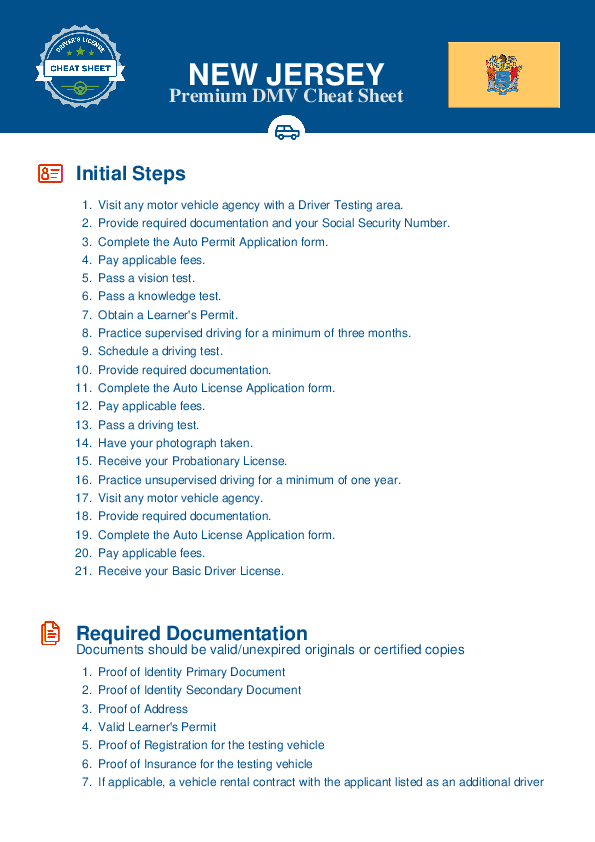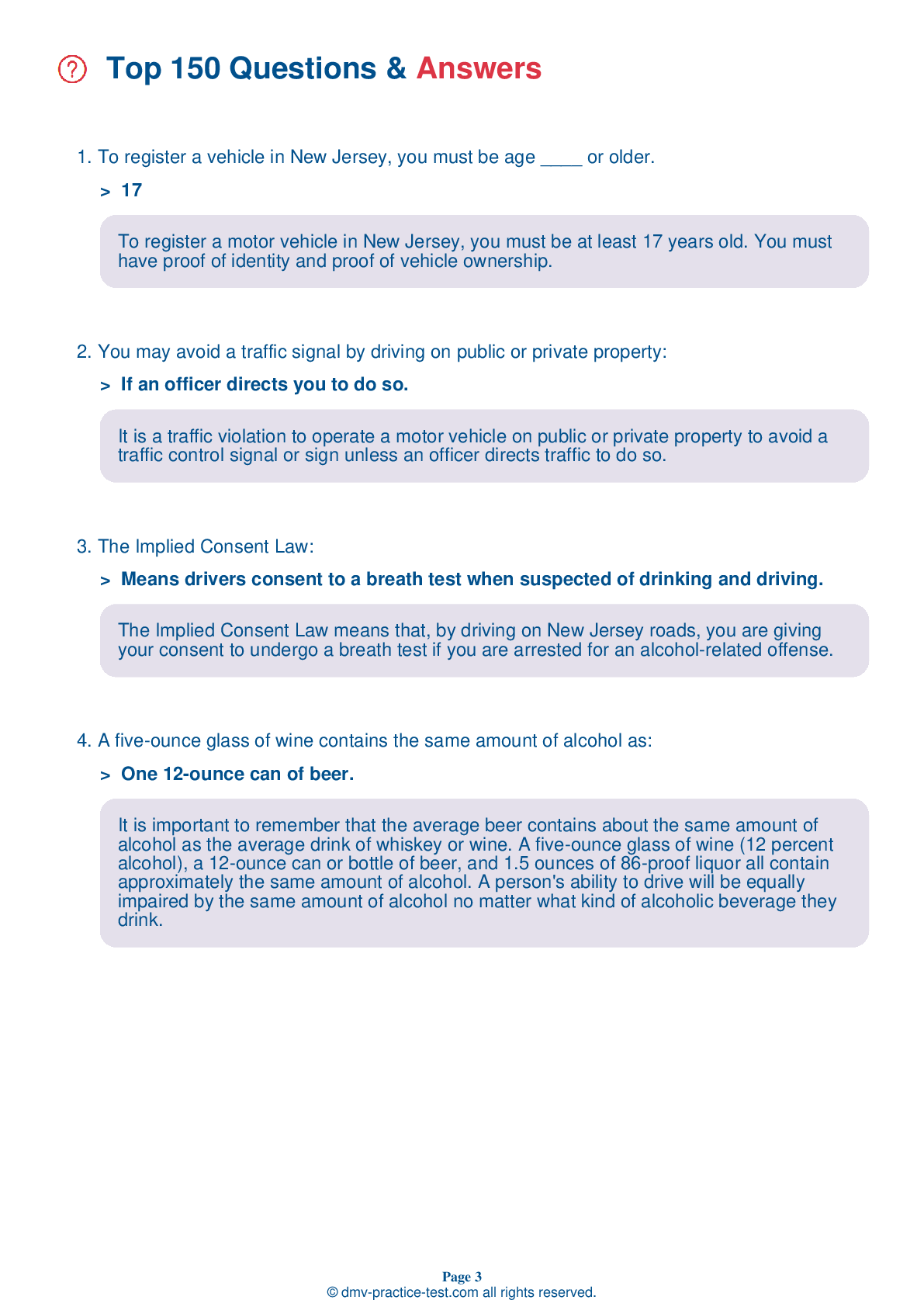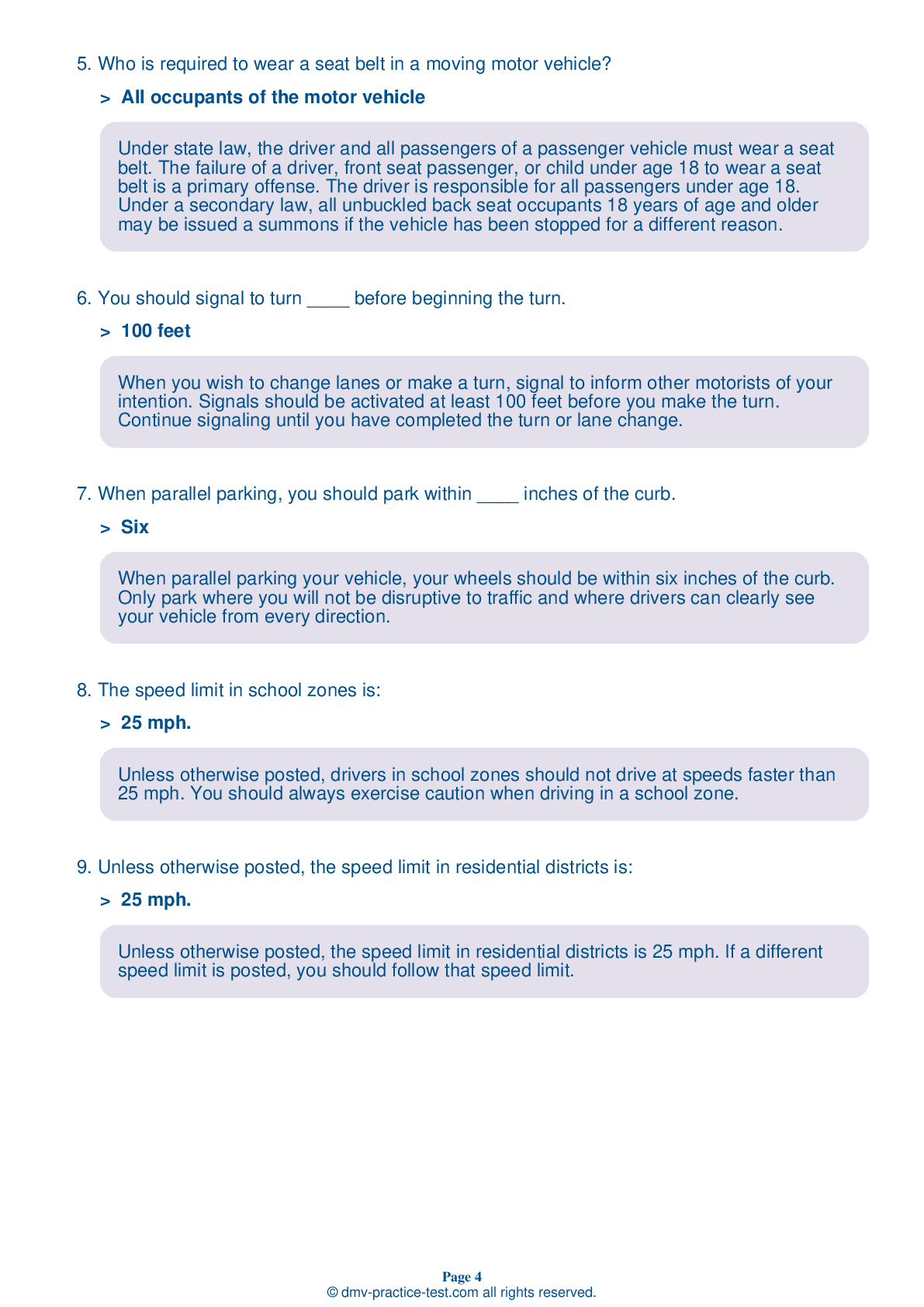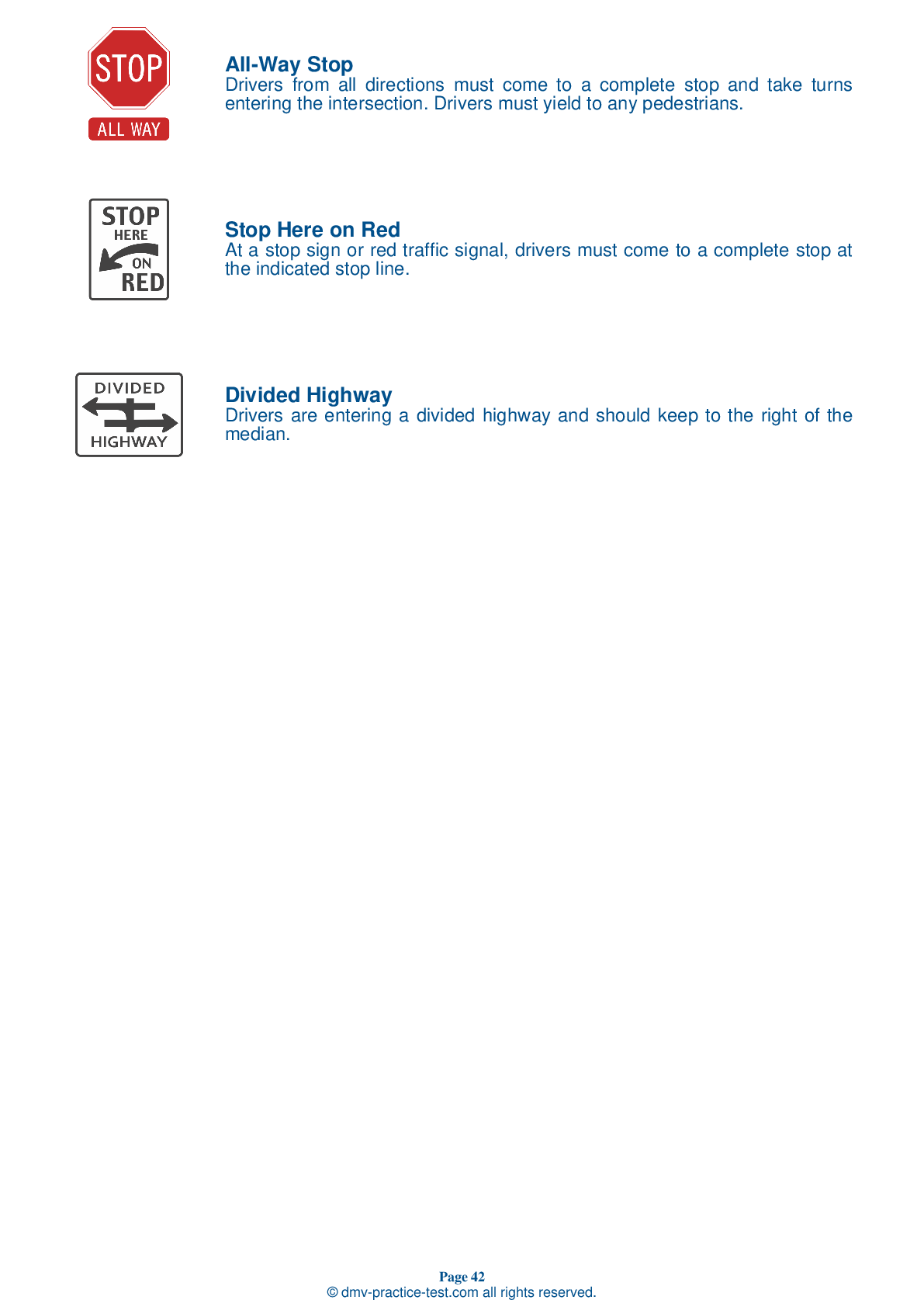FREE New Jersey DMV Practice Test #10 Page 3 of 7
New Jersey's DMV practise examinations have been revised for January 2025. It includes questions based on the New Jersey Driver Handbook's most essential traffic signals and regulations for 2025. Use actual questions that are very similar (often identical!) to the DMV driving permit test and driver's licence exam to study for the DMV driving permit test and driver's licence exam.
On the practise exam, each question gets a tip and explanation to help you remember the concepts. The written component of the official New Jersey DMV test will include questions about traffic rules, traffic signs, and driving statutes, as well as knowledge from the Driver Handbook.
To obtain a passing grade, you must correctly answer 40 of the 50 questions. Take this practise test from the New Jersey Department of Motor Vehicles to help you prepare for your instruction permit or driver's licence.
The DMV exam is available in several languages.
Using any kind of testing assistance will result in an automatic fail, and the DMV may take additional action against your driver's licence, so stay away from it.
15 . This sign means:
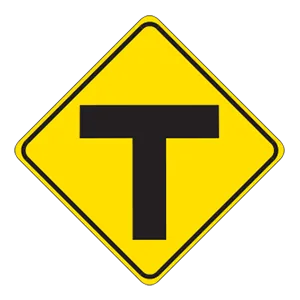
Warning signs prepare drivers for upcoming road conditions and hazards and are usually yellow with black markings. This sign warns drivers that they are approaching a T intersection and should prepare to turn either right or left.
16 . When driving behind a transit bus that is signaling to enter a traffic lane, you should:
Drivers behind a transit bus are required to yield the right-of-way to the bus if the bus is signaling to enter a traffic lane. Drivers should adjust their speed or change lanes to make re-entering traffic easier for the bus.
17 . What is a "No zone?"
"No zones" are the large blind spots around trucks and other large vehicles. Drivers of smaller vehicles should avoid lingering in "No zones."
18 . If you are driving on a one-way street and an emergency vehicle using its flashing lights approaches your vehicle, you must:
If an emergency vehicle using its lights or siren approaches while you are driving on a one-way street, you must drive toward the nearest roadside and stop.
19 . Increasing your vehicle’s speed:
The faster you drive, the smaller your field of vision becomes. As your speed increases and your field of vision decreases, you must be extra alert to potential hazards.
20 . This sign means:
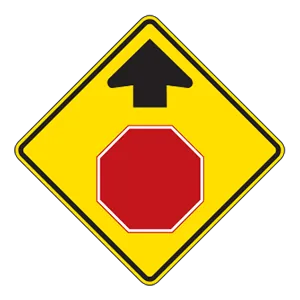
Warning signs prepare drivers for upcoming road conditions and hazards and are usually yellow with black markings. This sign tells drivers that there is an upcoming stop sign and that they should prepare to come to a complete stop before proceeding.
21 . Which of the following does not happen after drinking?
Alcohol reduces your reaction time, reduces your ability to see clearly, changes your judgment of speed and distances, reduces your ability to recover from the glare of headlights, and often reduces your inhibitions and makes you more likely to take risks.
See the exact questions that will be on the 2025 New Jersey DMV exam.
99.2% of people who use the cheat sheet pass the FIRST TIME
LT gives us an insight on how the cheat sheet provided her with all the study questions she needed before taking her test.
Joe initially studied with the handbook and failed his test, he eventually found us online, studied and pass his test the first time around.
